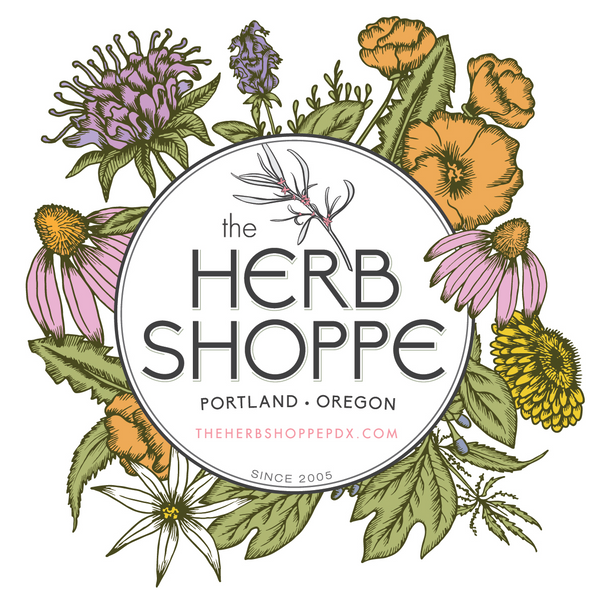One certainly does not need to be an herbalist or have an interest in plants or wellness to know this June’s herb of the month! This delightful aromatic is widely used in soaps and lotions, candles, cleaning supplies, culinary blends, teas, perfume, and so much more. People everywhere today and throughout history take pleasure in adorning themselves with its lovely scent! In fact, this purple flowering shrub got its name from the Latin word “lavare”, meaning “to wash”. Most anyone knows Lavendula, commonly known as Lavender.
Native to the mountainous Mediterranean, the Middle East, and India, this hearty herb is a part of the Lamiaceae (mint) family, is drought resilient, and has the capacity to grow in some places other plants wouldn’t dare! The earliest documented use of lavender dates back over 2500 years ago to Ancient Egypt where it was used in perfumes, cosmetics, and for embalming. Ancient Greeks and Romans also favored lavender in their baths and soaps, and for its association with love, tranquility, and protection.
There are over 450 varieties of lavender belonging to 45 different species that now grow around the world. Each variety smells, grows, and looks slightly different, although unlike some other flowering plants, all lavender varieties are easily recognized and do not stray too far from one another! Lavender is a hearty shrub with green leaves and long stems that blossom stalky purple flower buds. Some lavender varieties are best for baking and cooking, some are better for gardens, others great for crafting, and then of course, certain varieties are preferred for medicinal use. The most common varieties in the northern latitudes are Lavandula angustifolia and Lavandula x intermedia (also called Lavandin).While the flowers are edible and also used medicinally, it is the essential oil of lavender that is most sought after in herbal medicine and commerce around the world.
Lavender flowers contain potent volatile oils (also known as essential oils) that give this purple flower all of the fame and glory! These volatile oils are responsible for providing lavender with that divine scent we all know and love! Not only does lavender essential oil smell amazing, but it also is where the amazing medicine of this plant resides. Lavender essential oils are antibacterial and antifungal, which makes this herb a functional ally when diluted in blends for skin conditions such as eczema and acne, or for decreasing fungal presence like candida overgrowth. Lavender essential oil can also be used as a mild disinfectant for cleaning around the house or diffusing in the air to help your home smell fresh and help you and your family or guests feel relaxed and at ease.This herb’s clean and floral fragrance has calming and relaxing effects on the body and is used medicinally in aromatherapy and commercially in fragrance. As you probably already know from experience, inhaling the scent of lavender is soothing and can help to reduce stress hormones and improve sleep. Many baby blankets and lotions are scented with lavender, so actually this herb might be one of the earliest scents of comfort and peace many of us first remember, helping our smaller-selves drift off into peaceful sleep.
Hidden within the oil of lavender are compounds like flavonoids, which are anti-inflammatory and antioxidant, and linalool, which studies show helps to reduce blood pressure and anxiety. In the last few years there has been an increase in scientific studies of the effects that lavender essential oil has on the nervous system, and many psychiatric practices have begun to incorporate the use of lavender essential oil into behavior therapy. Even some dental offices have begun to use lavender essential oil on their patients for relaxation, and occasionally even applying it orally for antibacterial care!
This herb is dry, bitter, and cooling. Therefore, it is the most delicious addition to your lemonade on a hot, humid, summer day! Lavender can assist with stomach tightness, nausea, or cramping as it acts as a gentle tonic, especially where damp heat is present in the GI system. Stiff muscles? No problem! Lavender is antispasmodic and a sedative, helping to melt away that built up tension in your body or soothe other pains such as menstrual cramps or headaches.There really is so much this beautiful flowering herb can do! No matter if you are combating muscle pain, struggling with anxiety, looking for a natural ingredient to boost your skin health, or a clean and floral fragrance to scent your home, lavender is here to the rescue.
References:
https://health.clevelandclinic.org/health-benefits-of-lavender

